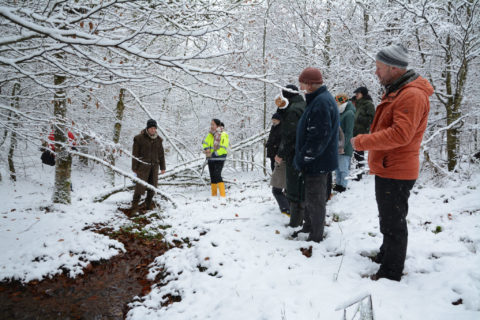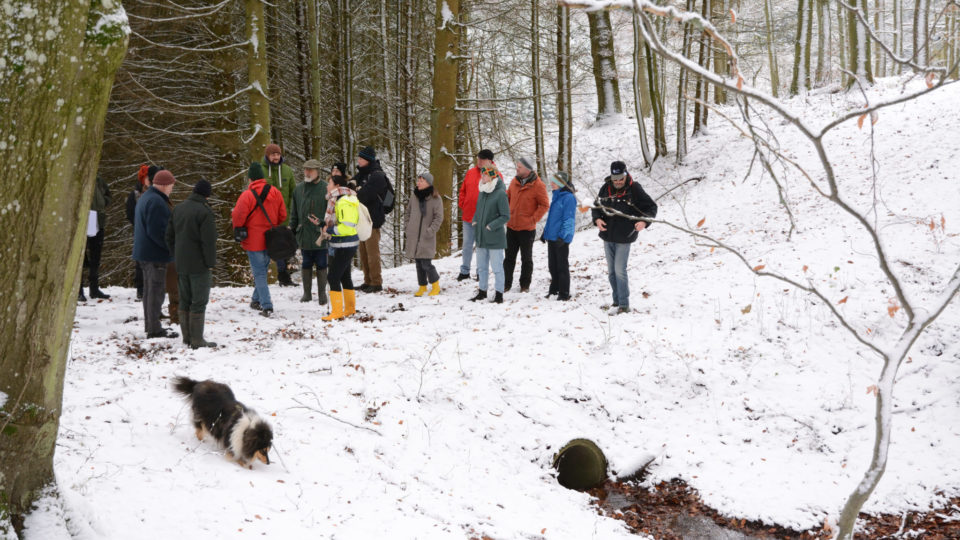The flood disaster of 2021 was one of the most impactful event of the year in Germany and some affected border areas of Belgium and France. A total of 220 casualties were claimed by the floodwaters, with approximately 190 in Germany. The Ahr Valley, in particular, was severely affected and gained nationwide recognition overnight.
However, numerous other areas were also impacted by the flood. Located about 50 km to the east, the Olef river and its small tributaries flow through communities such as Hellenthal and Schleiden. In the summer of 2021, the Olef also overflowed, leaving behind destroyed homes and lives in the Eifel valleys. The flood showed that new solutions for water management are crucial in this region. Not just because of flood prevention but also to ensure a sustainable water budget in general.
This is precisely why the event “Wet Nature, Dry Feet: Information session on nature-based solutions to improve water management” was held on November 29th in Schleiden. Wetlands International Europe hosted the event in collaboration with NABU Euskirchen, ARK Rewilding Netherlands, the LIFE helle Eifel Täler project, and Natagora. Responsible for the organisation was Aldert van Weeren (Natural Sponges Coordinator), with support from Moritz Adam (Policy Officer, Carbon) and Jonas Schriefer (Policy Assistant, Nature Restoration and Soil Health). The goal was to illustrate on-site flood prevention solutions beyond concrete and provide room for exchange.
Around 45 participants, mostly from the region, attended the event. In addition to interested citizens, representatives from municipalities, organizations, associations, and the business sector were present. In the morning, Aldert van Weeren led an excursion to illustrate on-site solutions. Despite the harsh weather, numerous participants took part at the field trip.

Field trip in the Dammerbach Valley. Picture: Guido Schütz
After the field trip, participants could warm up with soup and coffee. The second part of the event took place in the Vogelsang IP convention centre in Schleiden. Prof. Dr. Dr. Wolfgang Büchs started with a lecture on “After the flood is before the flood,” using the example of the Ahr Valley. Hettie Meertens from ARK Rewilding Nederland presented best practice examples of water retention already implemented in Geudal. The presentations by Lucia Schmitz and Marietta Schmitz showcased the work of the Biological Station Euskirchen and demonstrated what has already been practically implemented in the region. In contrast, Dr. Daniel Bittner from the Erftverband presented projects planned by authorities in the future to protect the region from upcoming floods. Lastly, Aldert van Weeren presented the method of “Leaky Dams” from a theoretical perspective, which he already explained to the participants of the excursion in the field.

After the field trip, the participants received theoretical input from presentations. These where followed by a lot of questions and discussions. Foto: Jonas Schriefer
Overall, participants showed great interest and a need for exchange, as evidenced by the fact that the Q&A sessions after the presentations often lasted longer than the presentations themselves. Providing space for such exchange and generating new ideas was the goal of the events, and the success was evident in the feedback from the participants.

